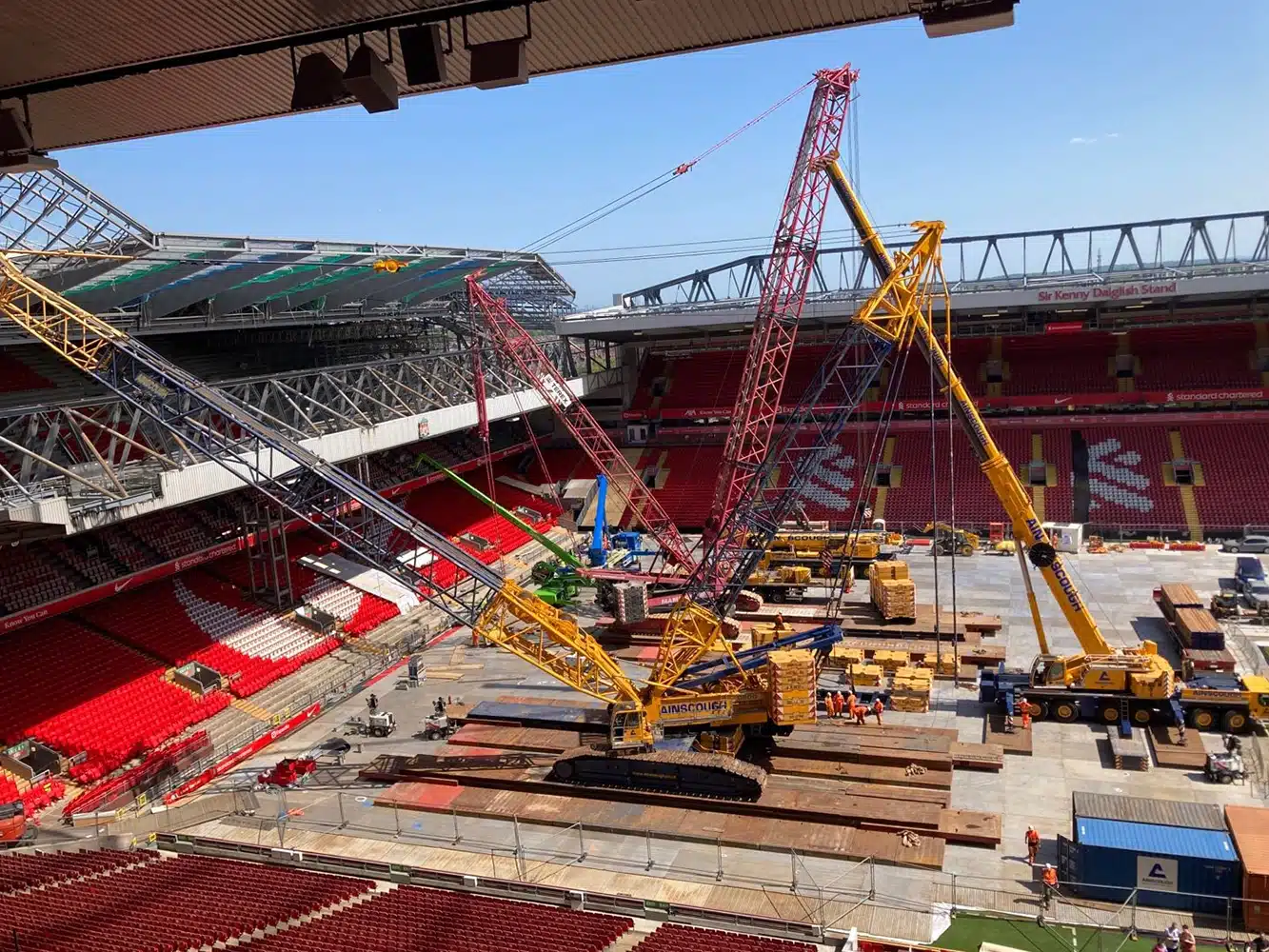
Crane mats are heavy-duty, large temporary platforms usually made from Timber, HDPE, Aluminium or Steel. They’re commonly used for protecting terrain and providing stability and support for cranes and other heavy machinery to function upon, regardless of the type of ground below.
The mats are utilised in many different industries ranging from construction to festivals and events. Crane mats are also known as ground protection or trackway mats, they can be used for loads of different purposes. In terms of actual crane pads, they can be utilised to support almost any heavy construction machinery, including Excavators, bulldozers, loaders and of course, cranes.
Crane mats protect sensitive areas by stopping vehicles from creating tracks in the delicate ground. They also help to avoid the cross-contamination that can occur when bacteria is picked up by a vehicle which then transfers it to another. Essentially, they prevent damage to natural habitats and sensitive areas.
Not only this, but they also offer protection to machinery. They create barriers between construction equipment and the ground, ensuring that it stays stable and undamaged. It also helps teams to work more smoothly and safely.
Crane mats, and ground protection in general can be used on most types of landscapes from marshes and swamps to areas with uneven ground, even boggy or gravelled areas.
Outriggers effectively increase the base areas of a crane by spreading the pressure over a wide area to offset any potential change in the centre of gravity. Whenever using a crane with outriggers, the crane should be on flat ground. Any fragility or unevenness in the ground may result in an outrigger piercing the ground and not doing its job, placing a crane or outrigger pads will stop this issue from occurring.
If the mats you select are not compatible with your situation, it can limit how effective the mat is. Crane mats are crucially important for the safety of workers as well as the security of your machinery. It’s important to know what to look out for when searching for the right mats for your project.
Crane mat sizing determines the level of support it can provide for your crane, the larger the mat, the larger the surface area. A greater surface area means it will be much easier to level, creating an overall safer working environment. Thickness, length and width should all be taken into consideration.
The size of the mat you require is influenced by the weight of your crane, as well as the ground surface below and the weight of what is being lifted. Our experts are trained in helping to calculate what will be best for your project.
As mentioned earlier, crane mats can be timber, aluminium, HDPE, rubber or even fibreglass. The material that you need completely depends on the nature of your project. Aluminium mats offer great load spreading for their weight, aluminium is also easy to wash and is 100% recyclable, making it reusable and sustainable.
Different crane mats are suited to different ground conditions. Outrigger pads are generally selected for muddy, rocky or sloped landscapes. It’s important to factor terrain into your choice of crane pad. The last thing that’s wanted on site is a tipped crane, if the wrong type of mat is selected for your project it could lead to dangers such as this.
Crane mats are used in a wide variety of industries, including construction, events and festivals, energy, telecoms, film and TV, transmission, mobile cranes, geotechnical, and rail. Our outrigger and crane pads are used for projects up and down the UK in all industries. Our project engineers will work with you to assess what mat or pad will work best with your load on the ground type you have on-site, calculating which mat is best for use on your project.
Contact us today to arrange a free no obligation quotation for your next project or event. Please complete the form below and one of our team of experts will contact you within 24hrs.
Alternatively contact us on 01698 352751 for an immediate response.